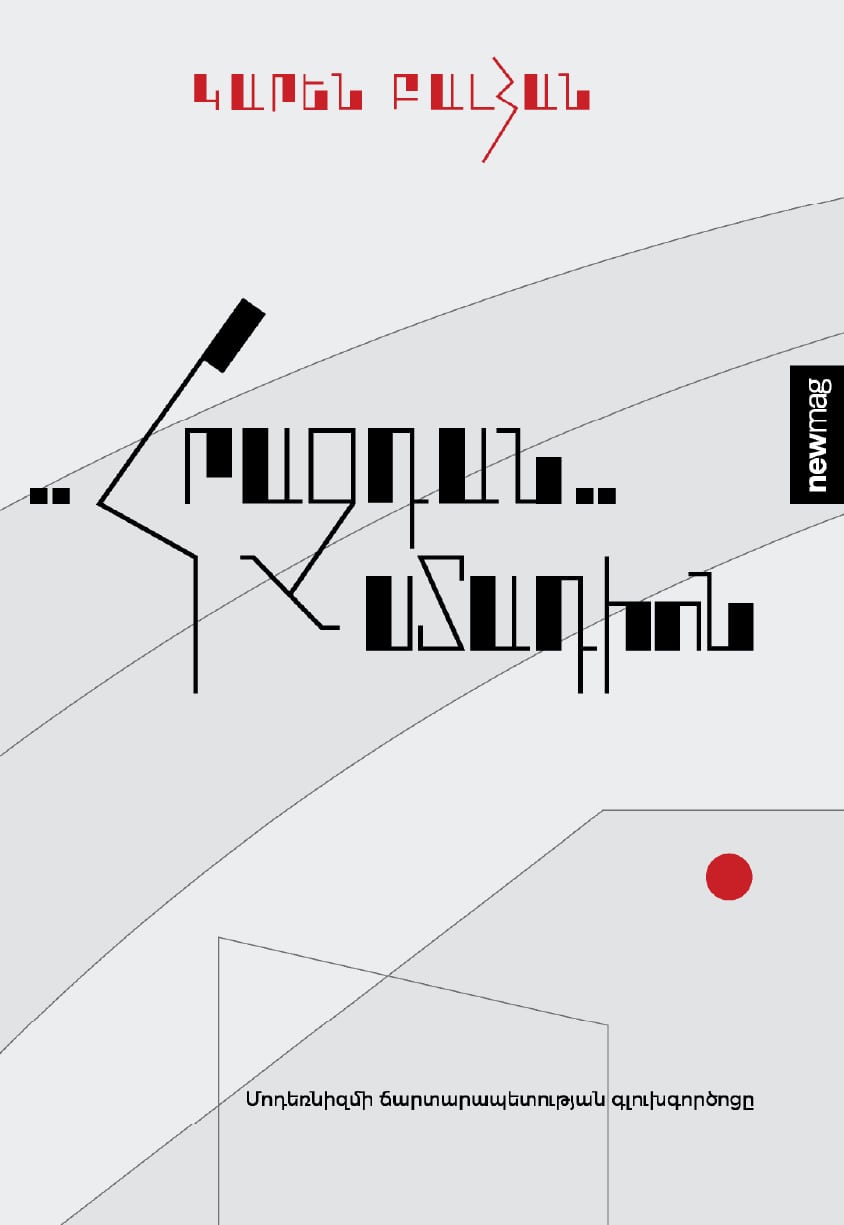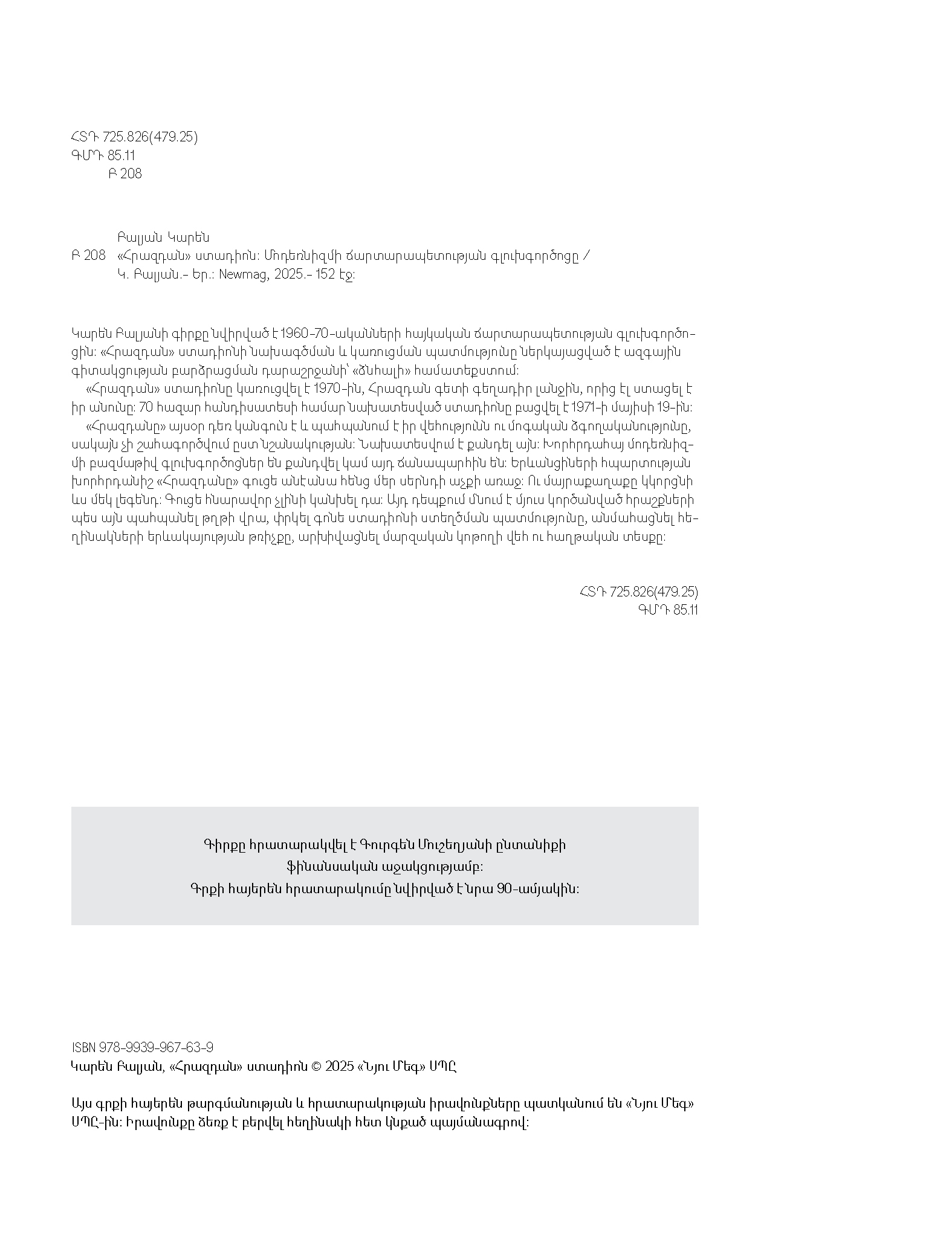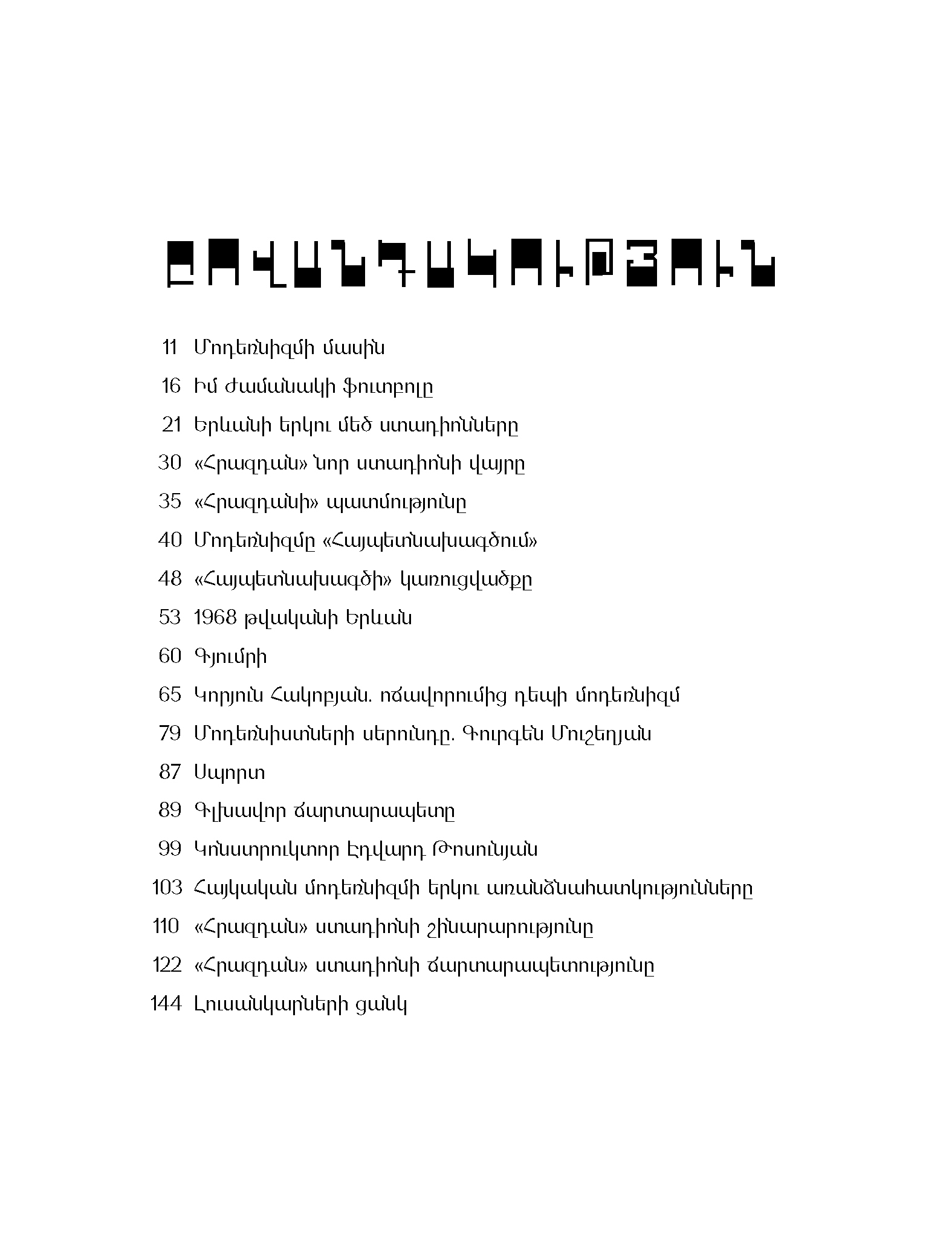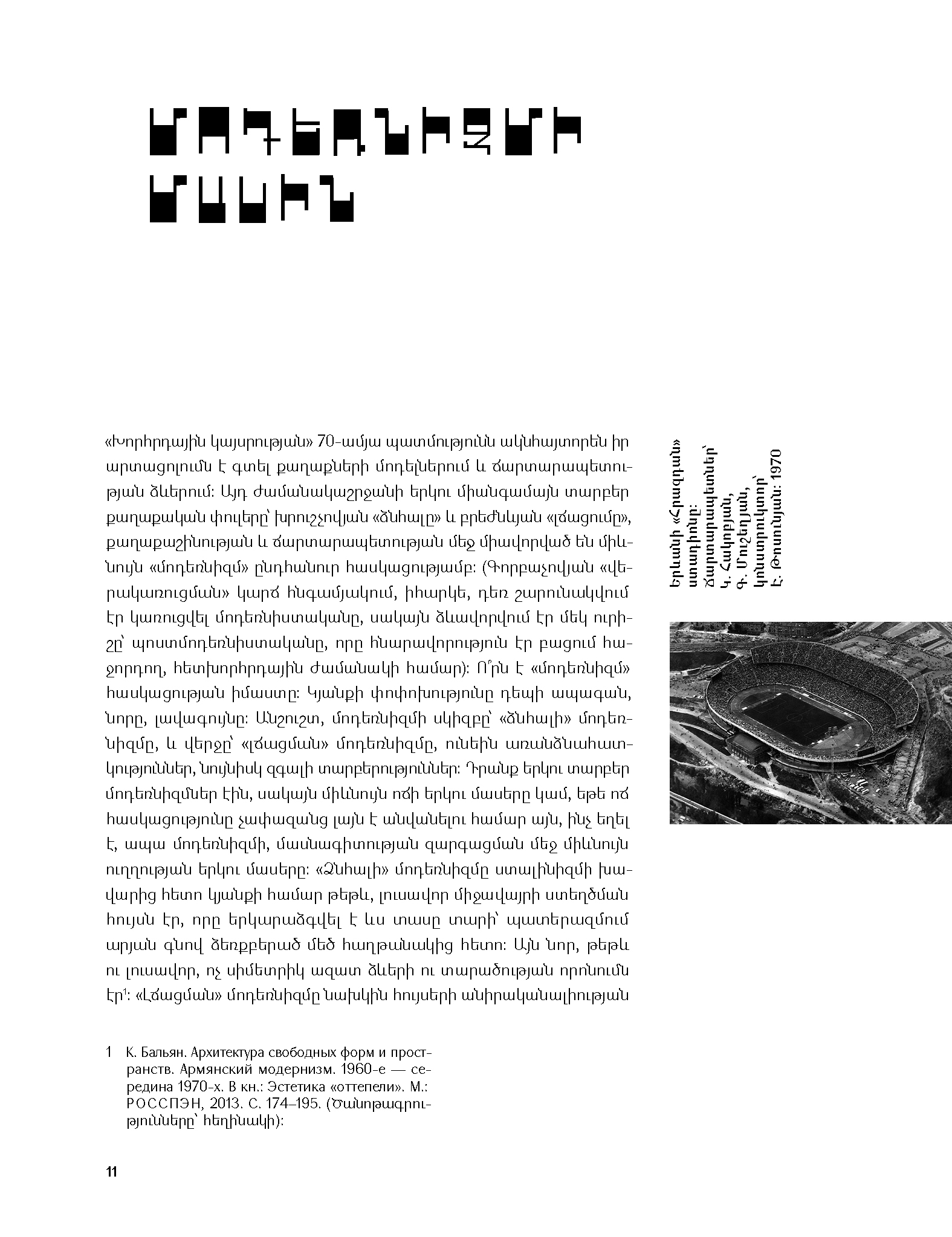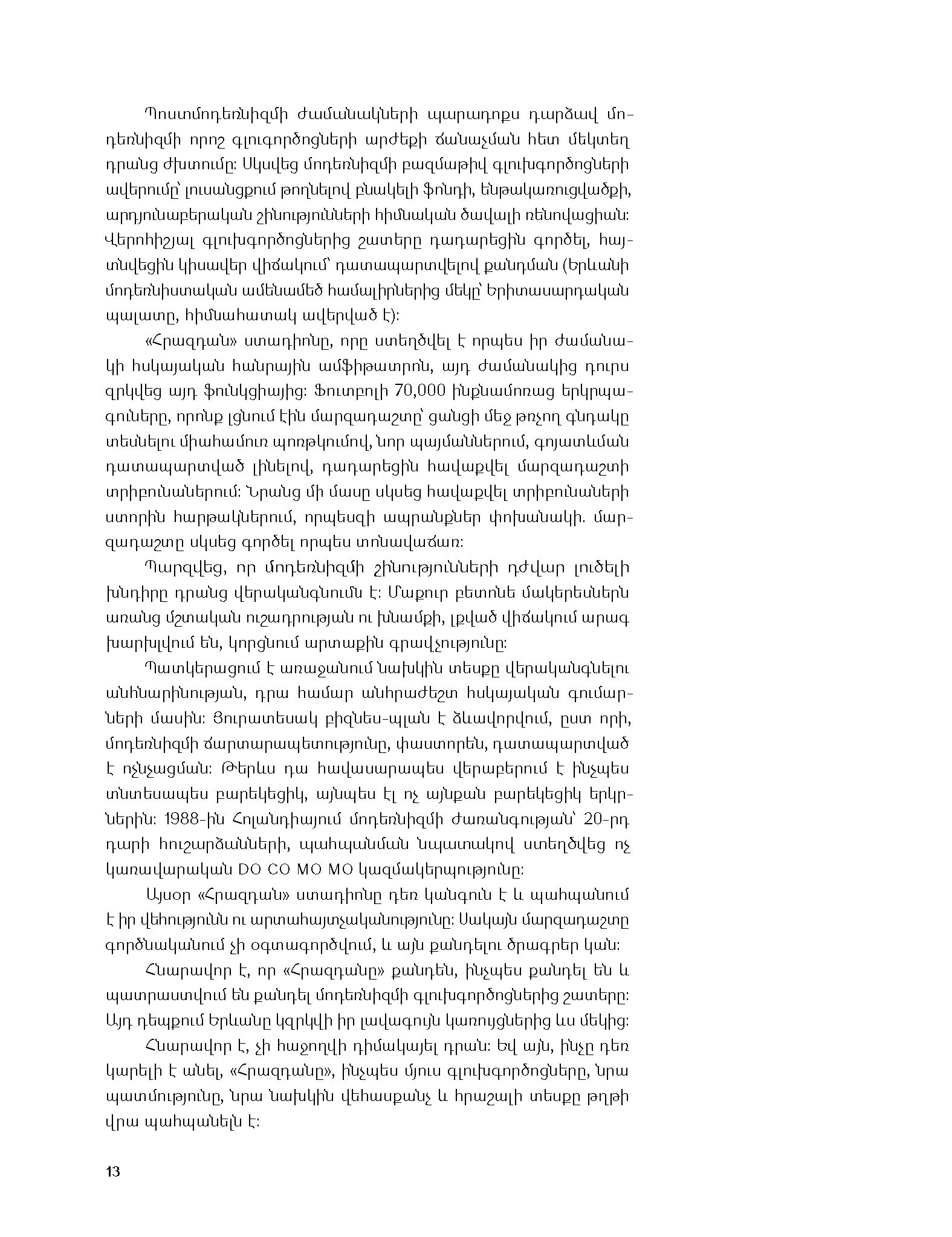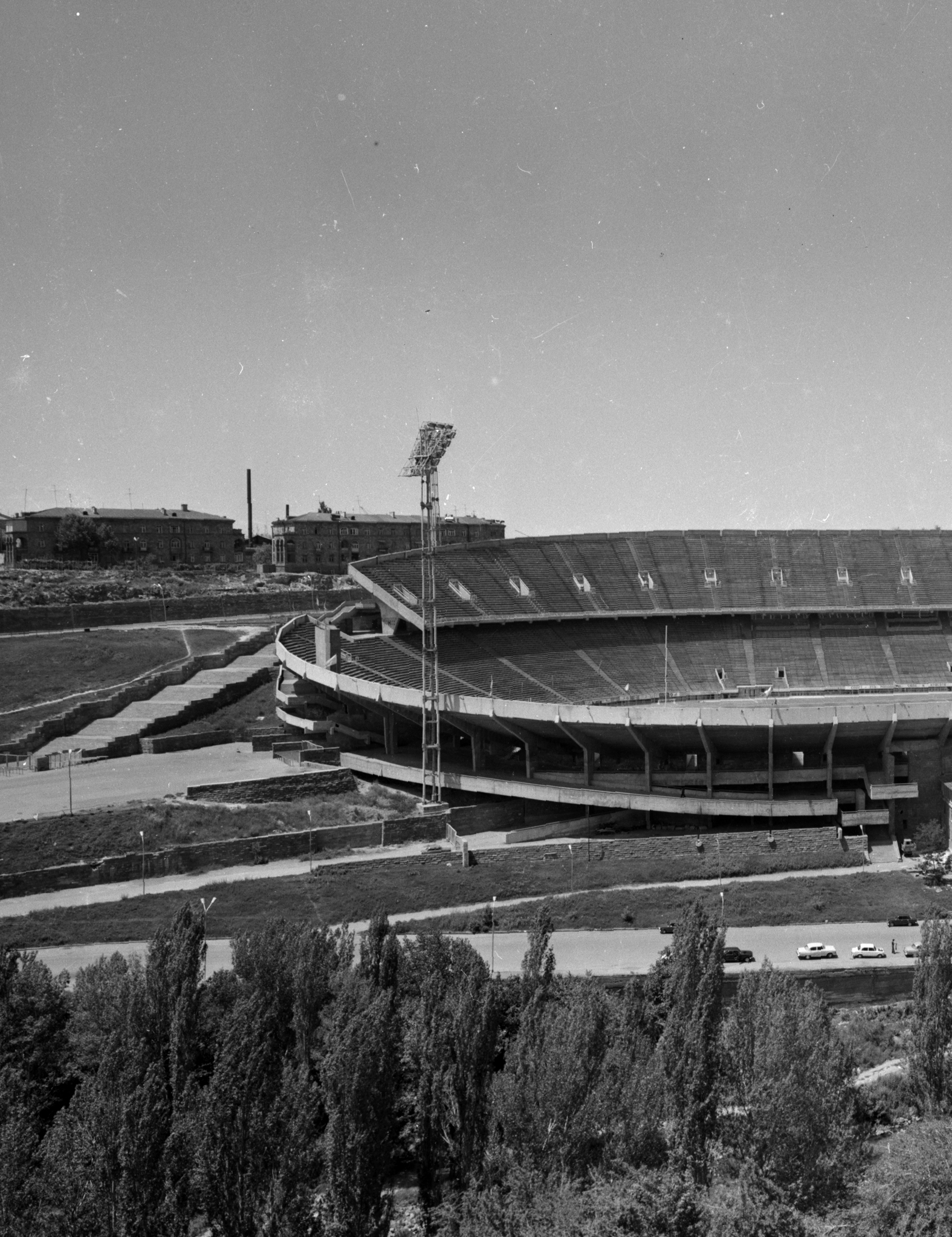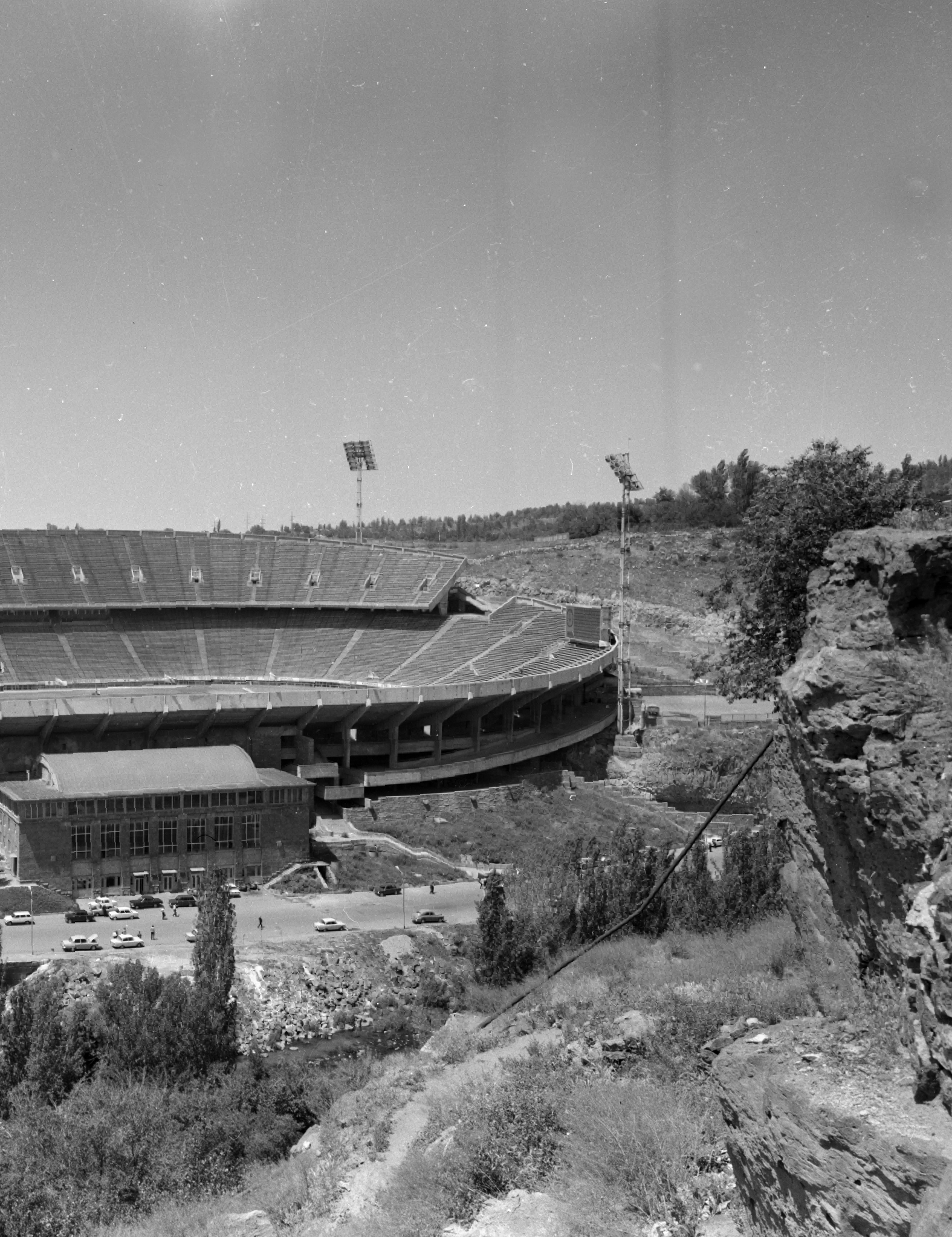Karen Balyan's new book is a tribute to one of the crowning achievements of Armenian modernist architecture—the "Hrazdan" stadium, a landmark built during the vibrant and ideologically charged decades of the 1960s and 70s.
Set against the backdrop of the Soviet Union’s "thaw" era and the awakening of Armenian national consciousness, the book traces the genesis, design, and construction of the "Hrazdan" stadium—an architectural marvel nestled on the slopes overlooking the Hrazdan River. Completed in just 18 months between 1970 and 1971, and made possible by the financial support of the Calouste Gulbenkian Foundation, the stadium opened its doors on May 19, 1971. At the time, it was one of the largest and most ambitious sports arenas in the USSR.
Today, the "Hrazdan" stadium still stands, majestic and awe-inspiring. Yet it no longer serves its original purpose, and plans for its demolition threaten to erase another emblematic work of Soviet Armenian modernism. Like many masterpieces from that era, "Hrazdan" risks disappearing before our very eyes—taking with it a piece of Yerevan’s soul and architectural heritage.
Karen Balyan’s book seeks to rescue this legacy from oblivion. Through detailed historical research and evocative narrative, it documents the vision and ingenuity of the stadium’s creators. If the physical monument cannot be saved, then its story—its symbolism, its significance, its triumph—must be preserved on paper. This book becomes an archive of imagination, an homage to an era, and a final tribute to a modern legend.






